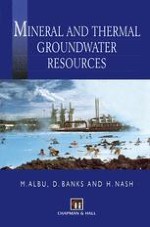1997 | OriginalPaper | Chapter
Geothermal energy in Iceland
Authors : Hjalti Franzson, Jens Tómasson, Guðrún Sverrisdóttir, Freysteinn Sigurðsson
Published in: Mineral and Thermal Groundwater Resources
Publisher: Springer Netherlands
Included in: Professional Book Archive
Activate our intelligent search to find suitable subject content or patents.
Select sections of text to find matching patents with Artificial Intelligence. powered by
Select sections of text to find additional relevant content using AI-assisted search. powered by
Iceland lies in the North Atlantic Ocean, just south of the Polar Circle. It is formed by the only major subaerial part of the Mid-Atlantic Ridge system (Figure 9.1) and has an area of some 100000km2. The Mid-Atlantic Ridge is represented by the Reykjanes Ridge to the south and the Kolbeinsey Ridge to the north. The continuation of the ridge across Iceland is complex, but there are two main zones of rifting present. Of these, the western zone runs from Reykjanes northeast to Langjökull where it is connected by the Mid-Iceland volcanic zone to the eastern rift zone, which runs from Tjörnes in the northeast of Iceland to the Torfajökull area in the south. In addition, there is a WNW-trending volcanic fracture zone which runs from Snaefellsjökull to within 30 km of Langjökull. The whole island is volcanic in origin, the rocks being dominantly of basaltic composition. A mantle hot-spot is thought to lie beneath Iceland, on the grounds of the observed anomalous volcanic productivity, geochemical signature and indications from geophysical measurements of an underlying low density mantle plume (Sæmundsson, 1978).
